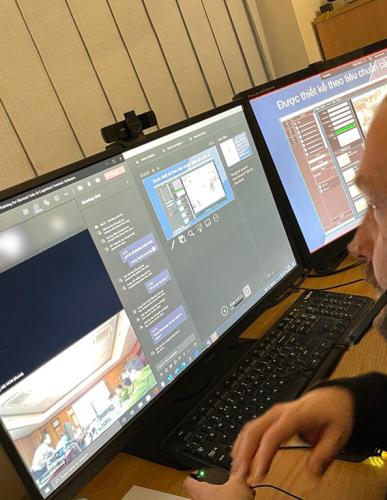In an era where digital images are ubiquitous and wield significant influence across various sectors, ensuring their authenticity and integrity has become a critical endeavor. Image analysis software serves as a fundamental tool in this pursuit, providing investigators with the means to meticulously scrutinize digital images for signs of manipulation or tampering. This article explores the pivotal role of image analysis software in digital investigations and highlights its capabilities in uncovering subtle alterations within images.
The Significance of Image Analysis Software
Digital images serve as vital sources of evidence in fields ranging from law enforcement and forensics to journalism and scientific research. However, the widespread availability of powerful editing tools has made it increasingly challenging to distinguish between genuine images and manipulated ones. Image analysis software addresses this challenge by offering sophisticated algorithms and techniques tailored for the examination of digital images.
Unveiling Tampering with FiA
Forensic Image Analyzer (FiA) stands at the forefront of image analysis software, equipped with a comprehensive toolkit designed to unveil traces of tampering or manipulation within digital images. Its multifaceted capabilities enable investigators to delve deep into the structure of an image, uncovering subtle inconsistencies that might otherwise go unnoticed.
Compression Level Analysis
FiA facilitates compression-level analysis, allowing investigators to dissect the compression artifacts present within an image. By analyzing these artifacts, such as blockiness or blurring, FiA can determine whether an image has undergone compression or recompression, providing valuable insights into its authenticity.
Block Artifact Detection
Block artifacts, resulting from compression algorithms, often serve as indicators of image manipulation. FiA excels in detecting and isolating these artifacts, enabling investigators to identify regions within an image that have been altered or tampered with. This capability plays a crucial role in assessing the integrity of digital evidence.
ADJPEG Analysis
The ADJPEG analysis feature of FiA enables investigators to scrutinize the encoding parameters of an image, particularly those associated with Adobe JPEG compression. By analyzing these parameters, FiA can detect traces of editing performed using software like Adobe Photoshop, shedding light on potential instances of manipulation.
Correlation Map Generation
FiA offers the capability to generate correlation maps, providing visual representations of the correlations between different regions within an image. Discrepancies or irregularities in these maps can signify areas that have been tampered with, guiding investigators toward suspicious regions warranting further examination.
Advancing Forensic Analysis with FiA
FiA not only aids in uncovering traces of tampering but also enhances forensic analysis through its advanced features.
Forgery Detection
By comparing various elements within an image, such as lighting, shadows, and textures, FiA can identify inconsistencies that may indicate forgery. This capability enables investigators to differentiate between authentic and manipulated elements, bolstering the credibility of digital evidence.
Metadata Examination
FiA allows investigators to examine the metadata embedded within an image, including timestamps, GPS coordinates, and camera settings. Discrepancies or anomalies in this metadata can raise red flags, alerting investigators to potential manipulation or tampering attempts.
Conclusion
In an age characterized by the widespread dissemination of digital images, ensuring their integrity and authenticity is paramount. Image analysis software, exemplified by tools like Forensic Image Analyzer (FiA), plays a pivotal role in this endeavor. Through advanced algorithms and techniques, FiA empowers investigators to unravel the complexities of digital images, exposing traces of tampering or manipulation that might otherwise remain concealed. By harnessing the capabilities of image analysis software, investigators can enhance the efficacy of digital investigations and uphold the integrity of digital evidence in the face of evolving technological challenges.



